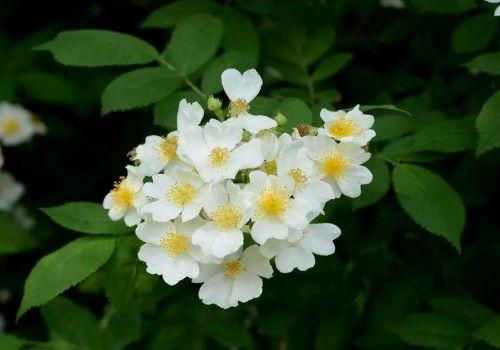
Tumi (scientific name: Rosa rubus H. Lév. & Vaniot), also known as Rubus rose. deciduous or semievergreen trailing shrub of the genus Rosa in the family Rosaceae. Branchlets are barbed. Feather strong compound leaves, leaflets 5-7 pieces, eggs strong elliptic or obovate, backside pilose, stipules and petioles adnate, entire. Corymbs.
Flowers white, fragrant. Fruit subglobose, dark red. The flowering period is April-May, and the fruit ripening period is September-October. The branches of Tumi flowers are dense, the flowers are fragrant and fragrant, and the color turns red after autumn. It is suitable as a hedge, but also can be planted alone on the edge of the grass. The fruit can be eaten raw or processed for wine making. The root contains tannins from which tannins can be extracted. The flowers are a good source of nectar and essential oils can also be extracted. It grows in areas with an altitude of 250m to 2200m, and often grows in hillside shrubs, grasses, miscellaneous forests, streamsides, hillside roadsides, shaded places, and forest edges.
Drought-tolerant, afraid of waterlogging. Tumi is the last flower that blooms in spring, and when it blooms, it means the end of spring. “Tumi does not compete for spring, and loneliness blooms the latest.” There is a saying in “Dream of Red Mansions”: It’s time for Tumi to bloom – after Tumi, spring will no longer be.
